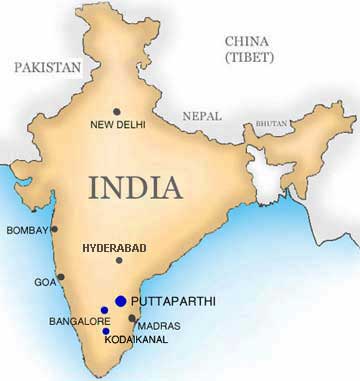New Delhi cowboys out on bovine hunt
 New Delhi - Alok Aggarwal, municipal vet and cow hunter, is in charge of a secret operation.
New Delhi - Alok Aggarwal, municipal vet and cow hunter, is in charge of a secret operation.
It is barely dawn, and Aggarwal already lights up his second cigarette of the day. One of his animal trucks is late, and the rest of his team is hanging around a New Delhi police station, bored.
That could draw unwanted attention: "The cow owners are well-connected and watch us closely. We cannot surprise them any longer."
For years the Indian capital's administration has been trying to keep down New Delhi's stray cow population, with Aggarwal on the front line.
Cows are sacred to India's Hindus. In many states, slaughter is forbidden and the animals are free to roam at their will.
However, the four-legged objects of veneration not only block city motorways and leave smelly cowpats in front of luxury boutiques - they are also dangerous. Recurring news reports talk about bovine-caused traffic accidents or raging bulls attacking cars or pedestrians.
Several times per week, Aggarwal's almost 100-strong team combs the city for stray cattle. In 2008, 18,852 cows were picked off the streets, city administrators said, but according to official estimates about 50,000 are still on the loose.
Time and location of the cow roundups are closely guarded secrets, only the veterinary office and the police know the details. The police officers are to protect the urban cowboys from cattle owners, who are often determined to protect their property by all means at their disposal.
Even Aggarwal is sympathetic to the resistance. "We destroy [the owner's] existence. I would also defend myself," he said.
The owners leave their cows to munch on the rubbish littering Delhi's streets and the feed provided by faithful Hindus. In the evening, the valuable animals wander back home to be milked.
More than once, the cow-catchers are pelted with stones when they pursue their duty. That particular morning, however, only few engage in lengthy arguments with the police officers, guarding the proceedings, armed with batons.
Meanwhile, vet Aggarwal tries to cut off the animals' escape routes and moves his cowboy's through the capital's slums, the beginnings of an inner-city rodeo. Onlookers gather to watch the spectacle.
"I have to catch the cows, no matter if they are in a park or in the middle of the street," Aggarwal said.
"The cows are smart, they know us," he added. Some of the animals take off as soon as they see city's green trucks. And they seem to know that the urban cowboys employ rough tactics.
Cow-catchers beat the animals with sticks, throw stones or pull tails to break their resistance.
City cows may loiter on New Delhi's chaotic motorways as calmly as organically reared cattle on an Alpine meadow, but put a rope around their necks and they panic.
"They are fast and dangerous," Aggarwal said. Some even had to be sedated to be subdued, he added.
For many Hindus' sensibilities, the cowboys are going too far. Complaints end up on the desk of Aggarwal's boss, city vet ML Sharma, who is responsible for making the Indian capital cattle-free.
"As a reaction [to the complaints] we equip our trucks with hydraulic ramps," he said, which should facilitate getting the animals into the trucks.
He also distributes videos of the cows' stables to local TV stations, showing the animals feeding peacefully in their new home. In the bovine battle, New Delhi's hearts have to be won as well.
Galopan Chitonka, one of Delhi's cow-chasers, is less worried about the cows' well-being then about his own health. "Only last week a cow ran against my shoulder. It still hurts," the 24-year-old said.
Another time, a man was dragged by a cow through an underground parking lot. Despite the injury risks, the job is popular.
"State employment is safe and quite well-paid," Chitonka said. New Delhi's full-time cowboys earn about 280 dollars a month, including a bonus for high-risk work.
Even if, one day, all of New Delhi's stray cattle has been caught, the animal catchers will not be out of work. The city's slums teem with other animals, like pigs.
"We still tolerate them," Aggarwal said. Pigs were a lesser evil as they normally don't stray too far from their owners, he explained.
"But they are the next step." (dpa)